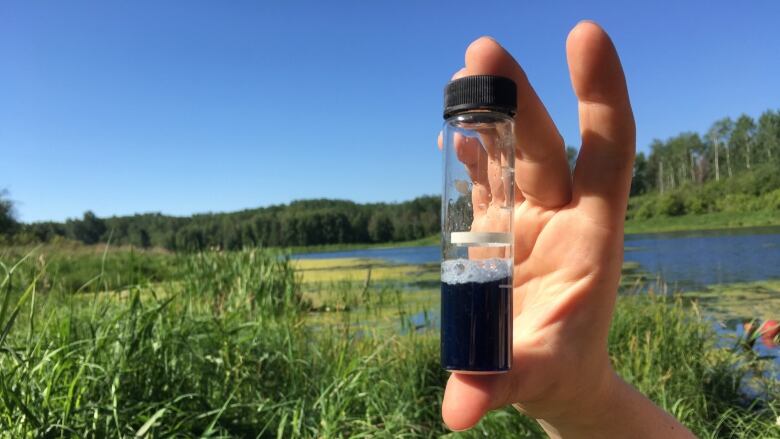'Shocking' results prompt more research on microplastics in Edmonton-area water bodies
'There is nowhere on earth that we are immune from the effects of this'

Dressed in waders, David Locky dredges mud from the algae-coveredbanks of Chickakoo Lake northwest of Edmonton.
Back at the lab, the soil and sediment will be tested for tiny fragments of plastic.
The lake, as every body of waterin the Edmonton region,is likely polluted with microplastics, Locky said.
"There is nowhere on earth that we are immune from the effects of this," hesaid.
"Even if we stopped all plastics production right now, the problem wouldn't go away. This is a new source of chemical pollution."
Locky, a biological sciences professor at MacEwan University,and chemistry professor Matthew Ross have been testing Edmonton-area bodies of water forplastic.
Locky and his team of student researchers have tested 35 sites in and around Edmonton and microplastics have been found at every one, Locky said of the preliminary research.
"The fate of all macroplastics is microplastic," Locky said."So anytime you see a water bottle on the side of the road or a plastic bag blowing in the wind, that is a future pile of microplastic.
Plastic doesn't degrade back to its original components. It breaks down into smaller and smaller piecesand those pieces have to end up somewhere, Locky said.
"Anything less than half a millimetre is what we're looking for."
The field research began with testing in the North Saskatchewan River,where anywhere from nine to 400 plasticparticles per cubic metre were recorded.
The research has since expanded to include lakes, natural wetlands and storm water ponds.
This summer, Locky'steam will alsobe testing invertebrates insects, snails, earthworms and leeches that live in freshwater systems.
The latest work will give scientists a better grasp of how the plastic is contaminating thewetlands and the creatures that inhabitthem, Locky said.
"It's shocking. That's why we expanded our study to invertebrates, to try and get a better handle on the extent of it."
The team is comparing the results between about 50 sites in different landscape settings. Locky expects the research project will continue for at least another two years.
"Invertebrates represent the bottom of the food webs and if they are ingesting microplastics either directly or indirectly it could have implications for species further up the food chain," Locky said.
"There's no doubt the research is important for many people, including those of us who might not realize that what we do in landlocked Alberta could have consequences in the world's oceans."













_(720p).jpg)


 OFFICIAL HD MUSIC VIDEO.jpg)
.jpg)



























































































